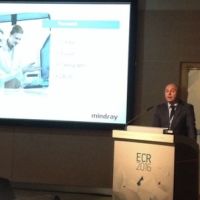Global Healthcare MRI Systems Valued at $6.4 bln
The global market for healthcare MRI systems was valued at US$ 6.38 billion in 2015 with the United States remaining a major contributor and purchaser of high-field and ultra high-field scanners (3Tesla and above), according to a new report by Spearhead Acuity Business Research & Consulting.
Of the six geographies chosen due to their distinct macro and micro-economics, North America has the highest number of MRI procedures carried out across the world, according to the report Global Magnetic Resonance Imaging Scanners Market Assessment & Forecast: 2015 - 2019 suggesting that strong supportive reimbursement has pushed imaging along with other drivers such as mobile MRI installations.
Innovative designs such as Open-MRI and upright MRI systems have been making their way into hospitals as well as office settings. In June 2011, the U.S. FDA approved new imaging modality of positron emission tomography (PET)/magnetic resonance imaging (MRI) in the U.S. market that allows simultaneous imaging of location, function and metabolic activity of organs in a single image. North America's extremities in the MRI market competition also increased with the entry of Europe's leader Esaote in the segment.
The report encompasses different product and technology segments such as open and closed scanners along with resolution technology segments. The resolution of MRI systems is differentiated based on power of magnets used in devices. The power of a magnet is measured in Teslas. This report provides analysis on low-field, mid-field, high-field and ultra-high field magnets. Thus, the higher the strength of the magnet, the higher the resolution. However, this is now partially offset due to advanced software and 3D rendering programmes that reconstruct noise-ridden images into crystal clear pictures for diagnostic imaging. L
Latest advances in technology have led to the introduction of superconducting magnets with field strength above 20T. The imaging of neuro disease using High Field MR (INUMAC) project alongside University of Florida has been developing a powerful 11.75 Tesla magnet that will dwarf others in terms of size and quality of imaging. The INUMAC will be able to image an area of about 0.1 mm, or 1000 neurons, and see changes occurring as fast as one-tenth of a second, according to Pierre Védrine, director of the project.
The market is leaning greatly towards enhancements with the help of software that cost a fraction of the initial device investment. Owners of 0.5T and 1.5T MRI scanners need not necessarily fret as software such as BrainSuite iMRI, PACS and teleradiology will greatly contribute to providing excellent diagnosis through noise reduction and peer consultations. Previously, 3T MRI scanners were considered of marginal importance, however the scene is changing as several applications such as brain and spine require very high quality imaging. It is expected that the world will see 7T devices being considered for clinical examinations on a regular level by the next decade.
Credit source: Report Buyer
Image credit: i.kinja-img.com



























